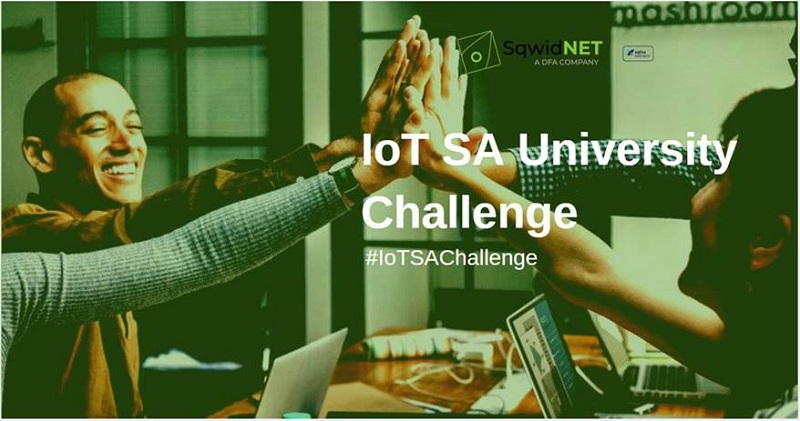
SqwidNet has launched the second round of its IoT SA University Challenge. The nationwide technology competition is aimed at getting university students in South Africa to solve real-world challenges using the Internet of Things (IoT).
“We developed this initiative in partnership with Sigfox as we believe that young people have a very different view of the world. They approach challenges differently and because they have grown up with technology at their fingertips, they find alternative ways of applying it to do so,” said Chetan Goshalia, Chief Sales and Marketing Officer at SqwidNet.
SqwidNet will offer the winning team a cash prize (for participants as well as for the tertiary institution), and the chance for the team leader to pitch their solution in front of industry and technology experts at the Sigfox headquarters in France.
“We saw incredibly creative solutions emerge during the first round of the challenge,” said Goshalia. “These included solutions for animal tracking, reducing the number of cash-in-transit heists, and the monitoring of climatic conditions such as temperature, humidity, pressure and gasses.”
The winning team from Stellenbosch University developed a smart collar which is placed on an animal in order to monitor the condition it is in and be alerted in real-time when it is at risk, including its whereabouts. The project included GPS location data that was used to create virtual perimeters (geofences). When an animal moves out of this geofence, an alert is triggered and sent via SMS or some phone message to the farmer who is responsible for it. The project also monitored some of the animal’s key vital signs like heart rate and animal behaviour. Existing technology-based solutions to prevent poaching can be very expensive due to the need to dart the animal in order to change the battery, but this IoT solution is a vast improvement because it relies on very little battery power, as it takes advantage of SqwidNET’s low power network that is dedicated to IoT.
“Students are encouraged to form teams with other students from other faculties as it supports the “multiple perspectives” principles of design thinking. Once they have a team in place and have come up with an idea for a specific solution, they can enter the challenge by visiting the IoT SA University Challenge website from the 25th of March 2019, entering their team members’ details and an outline of the project they are embarking on,” he says. Entries close on the 24th of May 2019.
“The first round of judging will then take place and the finalists selected will receive a development kit from SqwidNet together with ongoing support while developing their solution. The finalists will then have the opportunity to present their solutions to a panel of judges after which a winner will be selected.”
Goshalia concludes with these tips for students wanting to participate: “Identify a problem that is close to your heart and serves to solve real problems society is battling with. The UN’s 22 Sustainability Development Goals best encapsulating our most pressing problems. Once you know what the problem is, then you can start looking at how technology can be applied to solve that problem, using the Internet of Things (IoT). If you proceed to the second round, ensure that you tap into the resources and assistance we make available to you. Finally, don’t limit your thinking. At SqwidNet, we drive innovation through IoT by eliminating creative boundaries.”
Do you have anything to add to this story? Leave us a comment in the comments section below. In the meantime, follow or subscribe to our Startup Digest newsletter to ensure you don’t miss out on any future updates on African Startups.





